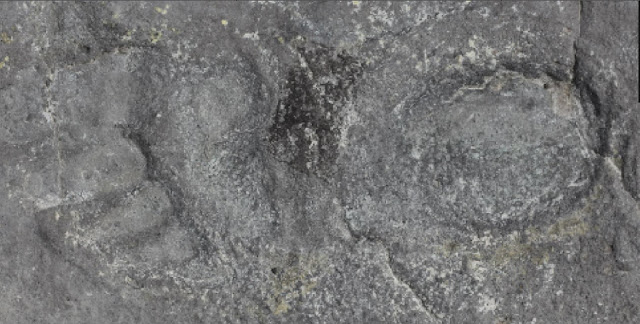In the shadow of a volcano in northern Tanzania, a mudflat preserves a treasure trove of footprints laid down by modern humans between 5,000 and 19,000 years ago. There, two groups of men, women, and children walked through the area within hours to days of each other. Some of the tracks show joggers’ hurried impressions; other prints that are less than five inches long may well belong to infants.
 |
| A party of more than a dozen adults and adolescents left footprints in volcanic mud in Tanzania between 5,000 and 19,000 years ago [Credit: Robert Clark, National Geographic Creative] |
“These are Homo sapiens—this is us, this is literally our history,” says Cynthia Liutkus-Pierce of Appalachian State University in North Carolina, the geologist who has led study of the site with support from the National Geographic Society.
But like other human footprint sites, these ancient tracks are at risk from erosion—and some have already vanished. Since they were first described in 2010, some of the faintest prints can no longer be distinguished from the mudflat’s surface.
The prints lie in an ephemeral river channel that sometimes fills with rainwater. And winds often whip across the arid site, dragging grit across the footprints like sandpaper.
Across the site, a given footprint wears down by a tenth to a sixth of a millimeter each year, according to a new study accepted in Quaternary Science Reviews that puts numbers to the losses based on 3-D scans and photographs. And some parts of a given footprint wear down much faster. In seven years, some spots on some footprints lost a quarter inch in height.
“We can see that even the deepest and most well-developed prints, like the ones we were looking at, were showing significant change,” says geologist and study leader Brian Zimmer of Appalachian State University. “If we do nothing, the prints will ultimately disappear over time.”
Step-by-Step Conservation?
Already, there is a digital backup of the site, which is known as Engare Sero. Smithsonian digitization experts Adam Metallo and Vincent Rossi, coauthors on the new study, 3-D scanned the site in minute detail in 2010. But Liutkus-Pierce and Zimmer want to make sure that the physical site remains intact as long as possible.
Some protective measures are now at the site itself. Between 2013 and 2015, local officials built a small rock wall around the prints to divert runoff. They also installed a fence around the footprints to prevent people from walking or driving across the site.
Preserving footprint sites is notoriously difficult, however, since the sediments are soft and easily disturbed. In the 1970s, scientists tried protecting the Tanzanian site Laetoli—which contains 3.7-million-year-old footprints of our ancient hominin cousins—by backfilling the site. But the backfill contained acacia seeds that took root and grew through some of the prints, forcing researchers to re-excavate the site in the 1990s.
Liutkus-Pierce says that she is in constant contact with the National Museum of Tanzania, with the hopes of conserving the site and ensuring wider access to Engare Sero’s 3-D models. But she says that she needs more help to protect these footprints from the elements—and to keep them as part of the human story.
“I’ve been trying to find somebody to try and help with this, and in fact I’ve gotten zero response,” she says. “We really need some help … I would really hate for these things to get damaged or destroyed.”
Author: Michael Greshko | Source: National Geographic [August 22, 2018]








Комментариев нет:
Отправить комментарий